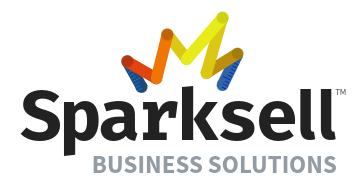We’ve all been there: we click a link, the page hesitates, the spinner spins, and we’re gone. As small business owners, we can’t afford to be the site someone abandons. That’s why having a fast-loading website isn’t just a “nice to have”—it’s a competitive advantage that touches every part of our business, from brand perception and SEO to conversions and customer loyalty.
Let’s talk about why speed matters so much, and how we can make it work for us. First impressions happen in milliseconds.
We only get one chance to make a first impression, and online that impression is shaped by speed. When our pages load quickly, we communicate trust, professionalism, and care. A fast-loading website tells visitors that we value their time, we’re organized, and we’re credible. On the flip side, slow pages make our businesses feel outdated and unreliable. Customers may assume our service will be just as sluggish as our site, which isn’t a thought we want to plant.
1. Speed drives conversions.
We’re all working hard to turn visitors into leads and customers. Here’s the simple truth: faster sites convert better. Every second counts. Even small delays increase bounce rates and reduce completed actions—fewer form fills, fewer cart checkouts, and fewer phone calls. When our pages respond quickly, people move smoothly from browsing to buying. That can be the difference between a week of “almosts” and a week of real sales.
2. Better user experience keeps people coming back
When we remove friction, people stay longer, view more pages, and return more often. That’s because a fast-loading website feels effortless. It’s easy for customers to find what they need, understand our offerings, and reach out. They don’t have to wrestle with laggy menus or slow image carousels. Over time, that positive experience compounds into loyalty and word-of-mouth referrals—two of the most valuable growth engines for small businesses.
3. Speed boosts SEO and discoverability
Search engines care about user experience, and page speed is a big factor. A fast-loading website can improve our rankings on search results, help us appear in more relevant queries, and reduce the cost of acquiring traffic. Faster load times also improve Core Web Vitals, which search engines use as quality signals. Better SEO means more organic traffic, more leads, and lower marketing costs. That’s a win we can feel in the bottom line.
4. Mobile is non-negotiable
More than half of web traffic is mobile. We can’t expect mobile users on spotty connections to wait for bloated pages to load. When our site is quick on mobile, we capture impulse visits—from the person standing outside our shop to the homeowner searching for a local service. A fast-loading website makes sure we meet customers where they are, on the device they use most.
5. Speed supports every marketing channel
We might be investing in ads, email, social, or local listings. All of that spend is wasted if the landing page lags. Speed is the multiplier for every marketing dollar. Fast pages raise Quality Scores in ads, lowering cost per click. They reduce bounce from email links. They help social campaigns drive real action. If we’re paying to get people to our site, let’s make sure the site greets them instantly.
6. Trust, accessibility, and inclusivity
Speed isn’t just technical—it’s human. Quick pages are easier to navigate for people on older devices, slower connections, or in areas with limited bandwidth. When our site loads fast, we’re being inclusive. That broadens our audience and strengthens our reputation as a business that serves everyone well.
7. Practical ways we can speed up our site
We don’t need a massive budget to get faster. Here are straightforward steps we can take:
- Compress images: Use modern formats like WebP and right-size images to what’s actually displayed.
- Minify and combine files: Shrink CSS and JavaScript, and remove unused code.
- Use caching: Browser and server caching can serve repeat visitors instantly.
- Employ a CDN: A content delivery network serves our site from locations closer to our users.
- Optimize hosting: Choose reliable, performance-focused hosting and enable HTTP/2 or HTTP/3.
- Lazy-load media: Load images and videos only when they enter the viewport.
- Limit heavy plugins: Fewer scripts means fewer delays; audit what we truly need.
- Preload key assets: Fonts and above-the-fold resources should be prioritized.
8. Measure, then improve
What we measure, we can improve. Let’s make performance testing part of our routine:
- Run Lighthouse or PageSpeed Insights for lab scores and suggestions.
- Check real-user data with tools that report Core Web Vitals.
- Test on mobile networks and older devices to reflect real conditions.
- Track bounce rate, time on page, conversions, and revenue before and after changes.
9. Tell a better brand story with speed
Our website is often the first—and sometimes only—touchpoint customers have with our brand. A fast-loading website aligns with the story we want to tell: that we’re responsive, modern, and customer-first. It’s a quiet signal that increases confidence and makes every other brand message more believable.
10. Return on investment we can see
Speed improvements compound. They reduce infrastructure costs, improve ad performance, and increase organic traffic. They raise conversion rates and customer satisfaction. Unlike some initiatives that are hard to quantify, performance work shows up in metrics we care about—sales, leads, bookings, and reviews.
Let’s make speed our advantage. We don’t need to be a tech giant to deliver a lightning-fast experience. With a few focused changes, we can build a fast-loading website that wins more clicks, keeps more visitors, and converts more customers. In a world where our competitors are just a tap away, speed is our opportunity to stand out.
Let’s commit to it. Let’s measure it. Let’s make our site the fastest door into our business—and keep it that way. Our customers will notice, our marketing will work harder, and our bottom line will thank us.



